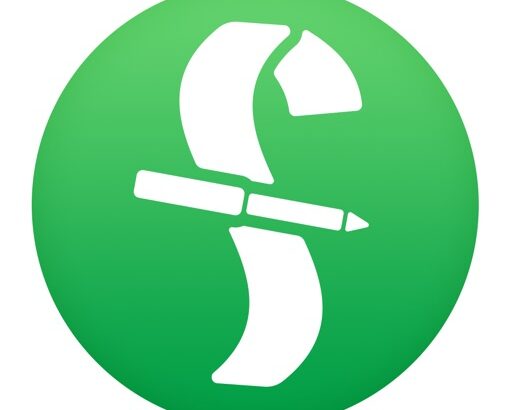Final Draft Crack + Product Key

Final Draft Crack State-of-the-art software and resources to make your vision a reality. Final Draft is the first choice of professional screenwriters and filmmakers worldwide. Final Draft offers exclusive content to guide you on your screenwriting journey. So you have a great idea for a film – brilliant! But before you can produce, direct, or sell your film, you must write the script in the appropriate format for the entertainment industry. Final Draft can help you understand screenplay formatting so you can focus on what matters most: creating a great story. There are a few basic rules for formatting a screenplay that you should know before you get started. Once you understand these formatting rules, Final Draft can take care of the rest! No matter who you are, you have a story to tell – and there’s never been a better time to tell it. Hollywood alone produces 700 films per year, and that number is increasing due to the rise of streaming technology. For storytellers like you, there are thousands of professional screenwriting opportunities every year, and Final Draft will be the most important tool in your writing arsenal.
But what does a scenario actually look like? Let us break it down for you! Scripts created using a standard word processor or a free web-based script template cannot be used in professional film productions. They often need to be retyped or go through a complicated conversion process to be ready for production. Screenplays written in Final Draft and saved in FDX format are ready for professional use, and you can’t just write screenplays with Final Draft: you can also write plays, musicals, sitcoms, television series, novels, and even graphic novels. Final Draft isn’t just for Hollywood. Final Draft screenwriting software is used professionally around the world, including in the United Kingdom, Canada, Australia, Germany, France, and over 60 other countries. There are dictionaries in English (US, Canada, and UK), Catalan, Danish, Dutch, French, German, Swiss German, Italian, Norwegian, Portuguese (Brazilian and European), Spanish, and Swedish. No matter what country you’re in, when you use Final Draft, you know you’re using the industry standard. In this guide, we show you examples of screenplays for feature films.
You may also like this Syncios Crack
Final Draft Crack Features
- Television scripts are based on the same basic formatting but also contain additional information that varies by genre Final Draft Activation Key,
- studio, or production company. While there are few hard and fast rules for formatting a screenplay, there are generally.
- accepted guidelines that you should be aware of. The first page of your script is called the title page. This page displays.
- the title of the script and the author of the script in the middle of the page. The author’s contact information is displayed at the.
- bottom of the page in the lower left corner. If you registered your screenplay with the Writers Guild, this information may also be listed.
- With Final Draft, you can unleash your creativity on the cover. You can use different fonts to make your title stand out.
- you can even add an image to set the mood. Here are some guidelines for the margins of your screenplay. Remember:
Final Draft Crack System Requirements
- Final Draft will automatically format your margins for you, so you don’t have to worry about doing this yourself.
- However, if you want to know the guidelines, this information will be useful for you. The top margin should be one inch Final Draft Product Key.
- The bottom edge and your right or outside edge may vary by up to a quarter of an inch. When printing your script,
- the left or inside margin should leave room for the triple-cut binding, so it should be about an inch and a half. The police are.
- another of those rigid rules. It should be in Courier font and 12 points. This font is an entertainment industry standard.
- This makes it easier to estimate screen time based on the number of pages. Try a different font and your script will look amateurish.

What’s new Final Draft Crack
- The top of the page – or header – is also simple and clear. All you should have here is the page number, right-aligned Final Draft Serial Key,
- about half an inch from the top of the page, followed by a period. The exception is the first page, which should have no page number at all.
- A script consists of several different scenes and each scene begins with a scene title, also called a slug line. Whether the.
- the scene takes place indoors (INT., short for INTERIOR) or outside (EXT., short for EXTERIOR); The location where the scene.
- takes place (a house, the beach, a cafe, etc.); What time of day it is (DAY, NIGHT, MORNING, AFTERNOON, EVENING, etc.)
- This scene title tells us that the scene takes place outside, that we are in the character Kevin’s house, and that the scene.
How to install it?
- takes place during the day. It’s good to be very specific in the title of the scene so that the reader knows exactly where it is.
- If you are writing a scene that takes place indoors, you can be very specific about the room in which the scene takes place.
- adding the room followed by a comma to the scene title. Example: This scene title tells us that we are in the bathroom of Kevin’s.
- house and that it is morning. A scene in a screenplay consists of action and dialogue. The action tells you what’s happening in the scene,
- and the dialogue tells you what each character is saying. After writing the title of your scene, you should always start.
- with a few plot points to draw the reader into your story. Example: A car stops in the driveway. KEVIN (30) gets out,
- goes to the trunk and opens it. He pulls out a SHOPPING BAG. Note that “Kevin’s GROCERY BAG” is written in ALL CAPS.
Conclusion
You can use this technique to highlight important props, sounds, and character movements in your scenes. This technique should be used sparingly, as too many capital letters can cause aspects of the script that you want to emphasize to be lost. Then we move on to the dialogue. The dialogue is indented and located near the middle of the page. Final Draft sets the appropriate indentations for you: the left indent is between one and one and a half inches from the left edge, and the right indent is about an inch and a half. The name of the character speaking is written above the dialogue block. It’s called a character hint, and its indentation is about an inch longer than the dialogue. Example: Sometimes your dialog continues beyond a page break. Final Draft solves this problem for you automatically, but it’s helpful to know what the program is doing and why. At the bottom of a page, where a dialog block begins, you’ll see the word MORE in capital letters, in parentheses, and centered on Final Draft Vst.
This tells the reader that there will be more dialogue with the same character on the next page. The dialogue is only interrupted for a page break at the end of a sentence. So don’t worry, it will cut your rates in half. At the top of the next page, the character clue ends with a CONTINUE to indicate to the reader that the dialogue begins on the previous page. Again, Final Draft does everything automatically for you, so just keep typing! There is a third dialog element that you should use sparingly. This is called the PARENTHETIC direction because it is inside the parentheses below the sign signal. It tells the actor how to conduct the dialogue. A bracket should be used when the dialogue does not indicate exactly how the actor might deliver the dialogue or for emphasis. This can also clarify who the character is talking to when it is unclear. Example: In very specific circumstances, a bracket can also be used in addition to the character reference: if your character speaks OFF-SCREEN (O.S.) or in VOICE-OVER (V.O.). Example:
